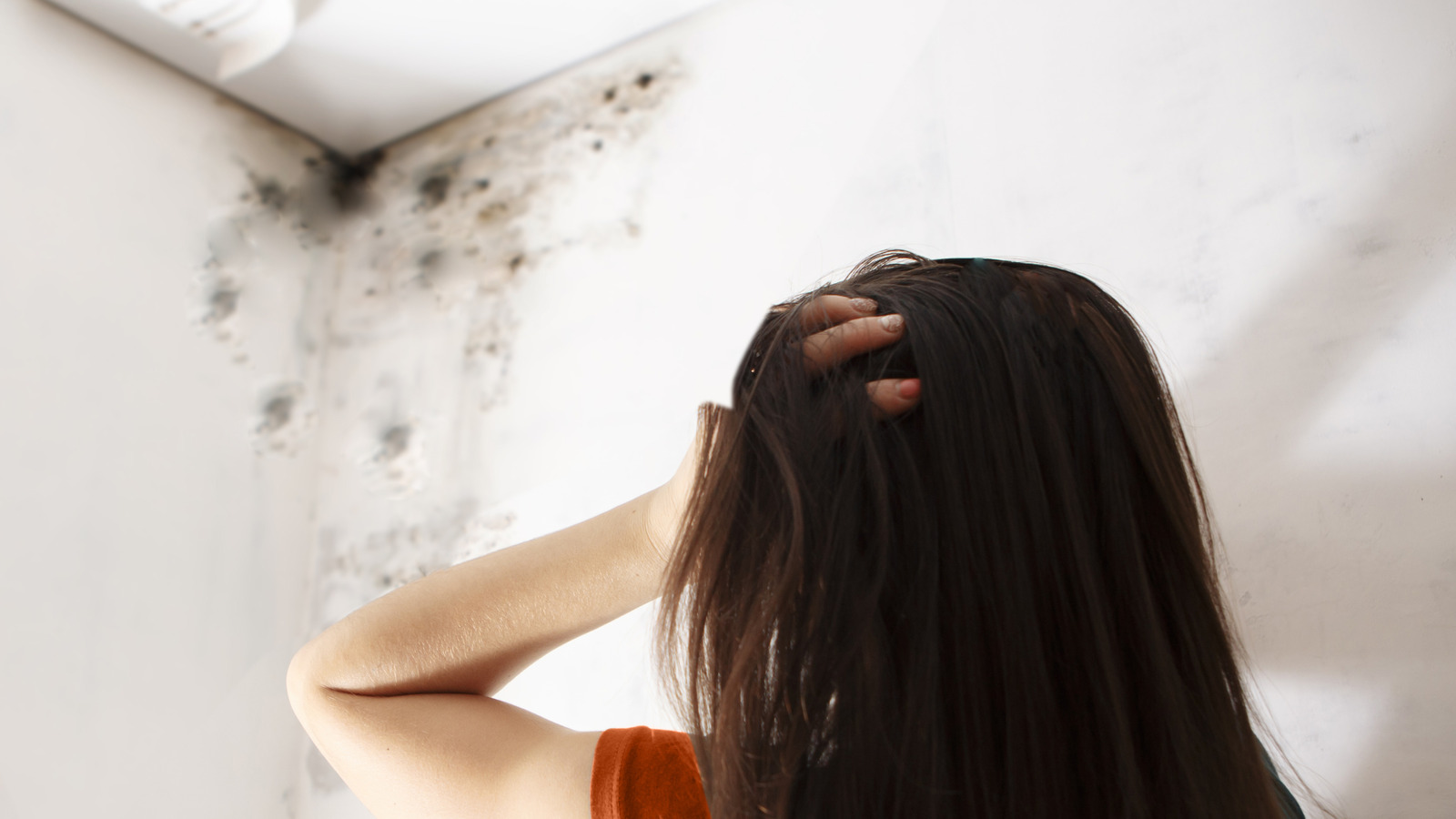
The Scary Side Effects Of Having Mold Hidden In Your Home – Health Digest
When a 28-year-old Central Ohio woman named Sara bought her first home in May of 2024, she likely felt the same nervousness and excitement that many do when they become homeowners. However, any positive emotions she felt may have soon evaporated. Within days of moving into her new house, she began to experience what she said was severe congestion and chronic sinus infections.
Then, six months into residing in her home, she began to have eyelid irritation. That’s when she discovered medical documents left behind by the previous owner, detailing similar eye issues. And after having her eye irritation clear up while on vacation, Sara said she began looking into matters further. Following advice she received on TikTok, she called in a mold detection service, quickly learning that, yes, her home was filled with hidden mold (per Newsweek).
What Sara went through wasn’t an isolated incident. According to the U.S. Centers for Disease Control and Prevention (CDC), it is quite common for people who spend time in damp buildings to experience mold-related health issues. Also, the affected individuals may not recognize mold as the source, instead mistaking it for other health conditions.
What symptoms are associated with hidden mold
The CDC notes that mold exposure can first show up as an allergy. If you are sensitive to mold, even inhaling its spores or touching a contaminated surface can cause sneezing, congestion, runny nose, itchy eyes, or skin rashes. And even if you don’t have a true mold allergy, you might still have eye, nose, throat, or lung irritation. Also, since these are similar to seasonal allergy symptoms, people will often overlook mold as the true culprit.
If you have asthma, mold can be a particular concern. Asthma already causes inflammation and narrowing of the airways, making breathing more difficult, and mold can be a trigger for an attack. This can lead a person with asthma to experience wheezing, coughing, chest tightness, and shortness of breath when they are exposed to mold. The CDC adds that there is research linking damp indoor environments to not only worsening asthma, but also the development of new asthma cases. They emphasize that it is critical to monitor mold in homes and workplaces alike.
Finally, the CDC describes a more serious response to mold exposure known as “hypersensitivity pneumonitis.” This is an immune-related lung condition and may cause fever, night sweats, muscle aches, extreme fatigue, and progressive shortness of breath. The CDC cautions that ongoing exposure can lead to chronic lung inflammation and even permanent damage. For this reason, recognizing mold-related symptoms early and addressing the source is essential for long-term health.
How to know if mold is the source of your symptoms
Experts say it may be tricky to determine if mold exposure is what is causing your symptoms. Writing for Ohio State Health & Discovery, Monica Kraft, M.D., who is an allergist and immunologist, said there’s no specific test to see if you’ve been exposed, although it is possible to test if you are allergic to mold. “If you have persistent congestion and coughing in the basement or wherever you’ve seen mold, but get better when you’re out of your home, that may be a sign that mold is to blame,” she said.
She also doesn’t advise testing your home for mold because it’s present everywhere. “You’re going to find it, if you test for it,” she said. “But it’s very unlikely to cause clinical symptoms unless there’s clear water damage and visible mold.” Kraft added, however, that if mold is the source of your illness, once it’s gone, your symptoms will dissipate.
What can be done about mold in your home
Healthline explains that you can often deal with small areas of mold on your own. Using soap and water, commercial mold removal products, or a diluted bleach solution (no more than one cup of bleach per gallon of water) are some of the best ways to remove mold. Make sure you open the windows for ventilation and use safety equipment such as gloves, protective eyewear, and an N95 mask. Never mix bleach with other cleaners or ammonia since it could produce harmful gases. You can scrub mold from hard surfaces; however, you may need to discard porous items like carpet and ceiling tiles. If there is a lot of mold, it’s in hard-to-reach areas, or the mold has been making you ill, it’s better to call in a professional mold remediation company.
Prevention is, of course, the best policy. Healthline advises fixing leaks promptly, drying damp areas, and keeping humidity low with an AC or dehumidifiers. Good ventilation goes a long way, too, so use exhaust fans or windows when bathing. You’ll additionally want to avoid carpeting damp spaces like bathrooms. Also, dry shower curtains and towels, and wash clothes in a timely manner. You can also clean with mold-killing products and use mold inhibitors in paint. Finally, they suggest maintaining appliances, keeping water draining away from the house, and repairing leaky or sweating windows.






